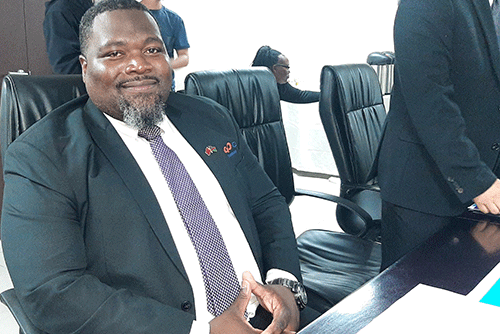SWAKOPMUND – Swakop Uranium has said they are willing to partner with the government to expedite a second desalination plant at the coast.
The company yesterday told Prime Minister Saara Kuukongelwa-Amadhila that the current water situation the region is experiencing is a challenge for their business.
Executive vice president of the company Irvinne Simataa revealed they have three more projects in the pipeline that would create at least 2 000 new jobs.
However, he said they would need at least 300 million cubic metres to make this a reality.
“The N$290 million investment that we want to make will require an additional amount of 300 million cubic metres of water. At the moment, we account for 65% of the user at the coast. We have at least three new projects that need to come online that will require us to employ another 2 000 people, depending on the availability of water,” Simataa said.
Pondering further on their intention to partner with the government to fast-track the second desalination plant, Simataa said they are willing to make such an investment to build, operate and transfer the facility to the rightful owner.
He added the company last year lost 39 production days due to the sulphuric bloom that added to the water constraints.
As a result, he said, the mine had to make a conscious decision to shut operations for that period so that water is available to residents.
“I want to highlight that in 2022, we produced 4 000 tonnes, instead of 4 700 tonnes due to the unavailability of water. The majority of those days were in December,” he explained.
Hence, he said, SU is realising that the water capacity in the region needs to be increased.
He said an assessment they carried out, supported by the Chamber of Mines, justifies a second destination plant.
Given the impact they have seen in their business, Simataa says they are keen to partner with the government.
“We have gone to the extent of presenting a non-solicit offer. We are willing to make such an investment with the view to build, operate and transfer the facility to the rightful owner,” Simaata said.
Rössing Uranium, after losing 59 operational days last year due to sulphur bloom eruptions in the sea, opted to construct an additional 60 000 cubic metre water storage facility.
Sulphur blooms occur when hydrogen sulphide erupts from decaying plants on the seafloor and can damage the delicate and intricate membranes used in the desalination process.
Kuugongelwa-Amadhila, on her part, said the government is always keen to create investment opportunities, and that this plant could help the government in addressing water challenges in the region.
“I understand that proposal was already made; hence, I will follow up with the relevant stakeholders,” she said.
The current desalination plant that was built in 2010 by Orano (then Areva Resources Namibia) provides about 75% of the overall drinking water to Swakopmund, as well as the nearby uranium mines and other industries.
Located 35 kilometres north of Swakopmund, it is the largest reverse osmosis seawater desalination plant in southern Africa.
Orano communication consultant Christine de Klerk last year indicated elevated levels of sulphur in the Atlantic Ocean do affect the plant.
De Klerk added that the period between December and April is the most active for sulphur outbreaks and that the plant had to stop production for an average of 13 to 15 days per year over the past five years due to this natural phenomenon.
– edeklerk@nepc.com.na


